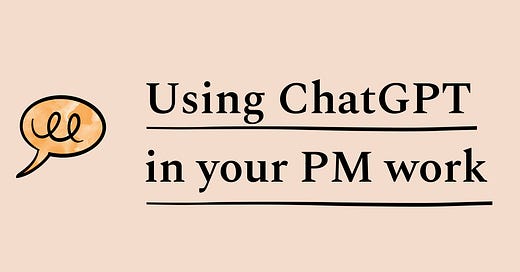How to use ChatGPT in your PM work
Real-life examples (and actual prompts) of how PMs are already using ChatGPT day-to-day
👋 Hey, I’m Lenny and welcome to a 🔒 subscriber-only edition 🔒 of my weekly newsletter. Each week I tackle reader questions about building product, driving growth, and accelerating your career.
Are PMs actually using ChatGPT/GPT-4 for getting real work done, and if so, how?
Let this idea sink in:

Though I don’t believe PMs will be displaced by GPT-4/5/6/n, I do believe that, as with most knowledge work, learning to work alongside AI will quickly become table stakes. Just like Grammarly became for writing, Copilot for engineers, and Firefly, Runway, Midjourney, and others are becoming for designers. It’s scary and confusing, but also exciting. When was the last time there was a transformative new tool for product management? Never?


Importantly, as Dan Shipper suggested in his recent guest post on building the Lenny Chatbot, “the best way to prepare for this fast-approaching future is to dive in and get your hands dirty.” So to help you roll up your sleeves and get started, I polled Twitter for concrete examples of how PMs are already using ChatGPT day-to-day. Honestly, I was shocked by how common (and useful) it has already become for people. Below, I’ve collected a dozen of my favorite use cases of how you can integrate ChatGPT into your work today—with actual prompts you can play with.
To follow along, go sign up for ChatGPT (seriously, go do that now), and try at least one prompt you find below. Even if you don’t find it useful today, it’ll plant a seed.
Also, a pro tip: You can ask ChatGPT for advice on how to best phrase your prompt. It’s very meta and very cool.
For example:

Here’s what it suggested when I did this:
The future is coming fast.
12 ways to use ChatGPT in your PM work
1. Collect and summarize user feedback and usage data
Synthesize survey results:

Find feature ideas and bugs from app store reviews:

Extract insights from raw usage metrics:

Do sensitivity analysis:

2. Come up with product name suggestions


3. Strengthen your argument
Come up with critical questions your audience may ask:

Identify gaps and hidden assumptions in your thinking:


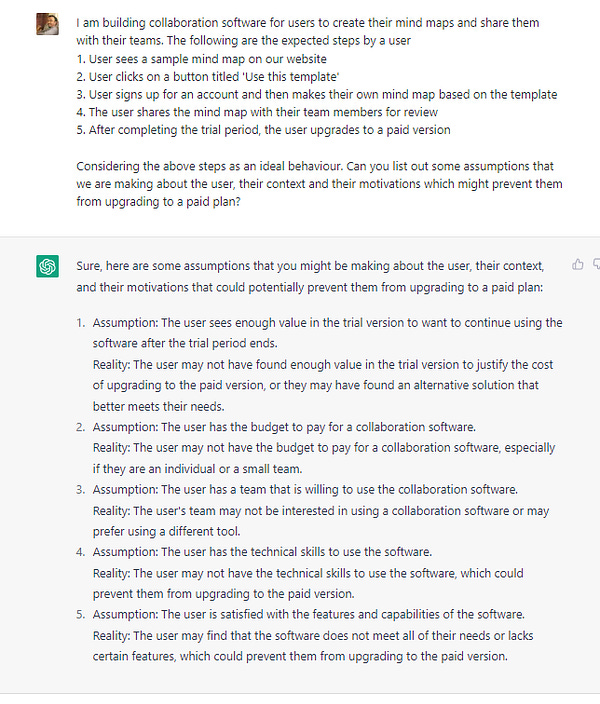
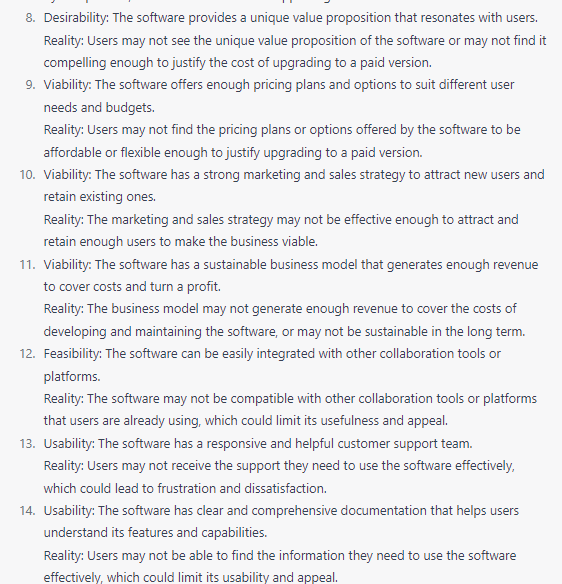
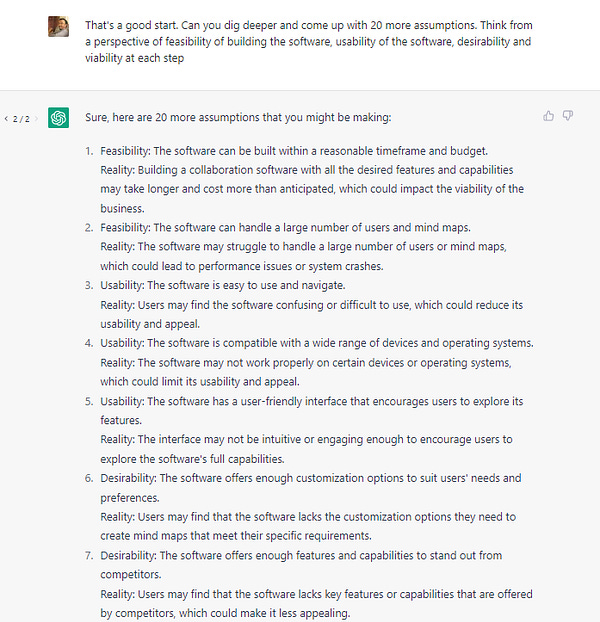
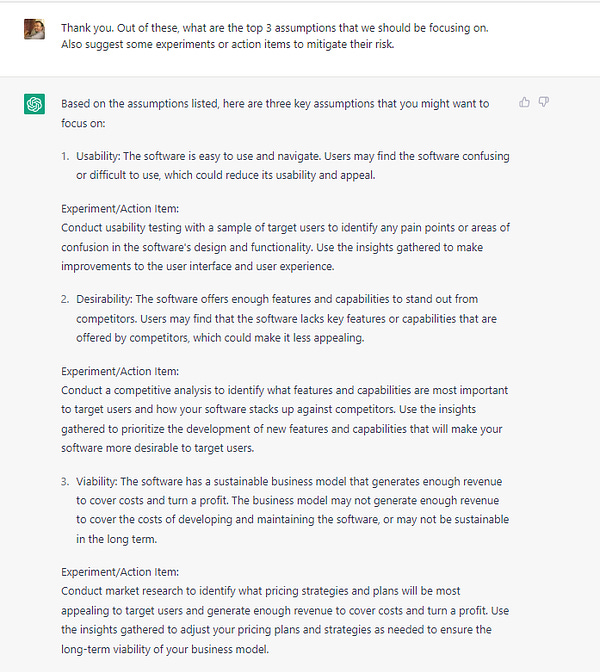
Highlight edge cases and counterarguments:




